The best TVs of 2020 are truly a sight to behold. Offering the best picture processing, connectivity, smart platforms, format support, build and design, these are the sets that were unrivalled throughout the past year – or, rivalled only by each other.
There are a huge number of televisions entering the market each year, all of them vying for your attention, and your cash. That's why we've brought together our pick of the best TVs for 2020, for a range of panel technologies like QLED and OLED, a mix of new Samsung TVs and sets from LG, Sony and Panasonic, and the best affordable models among the truly high-range displays out there.
The best TVs available now are still mostly 2019 models, though that is set to change in the coming weeks and months as new sets are released – such as the Samsung Q950TS 8K QLED, which has already snuck into our list below.
- Best 4K Ultra HD Blu-ray players: to watch the highest-quality discs you can
It's crucial to remember that the best TV overall may not be the one best suited to your needs. If the TV you're buying isn't the right size for your living room, a sensible cost given your budget, or able to support the HDR formats you're keen to try, it won't be as perfect for you as it is for someone else. Combing through spec sheets can be pretty mind-numbing work too: that's why we've brought together our pick of the 8 best TVs in this one guide, to help you choose the right one for you between them.
You can also check out our best 4K TVs guide, or just the cheapest 4K TV prices for a truly bargain deal. But, if you're looking for the best-of-the-best TV out there today without limits or stipulations – or a particular resolution in mind – this is the place for you.
Don't know where to start? Watch our TV buying guide video below:
Best TVs 2020 at a glance:
- Samsung Q90 QLED TV
- LG CX OLED Series
- Samsung Q950TS 8K QLED
- Sony Bravia A9G OLED
- Panasonic GZ2000 4K OLED TV
- LG E9 OLED TV
- Philips OLED 804
- Hisense U8B ULED TV
Best TVs
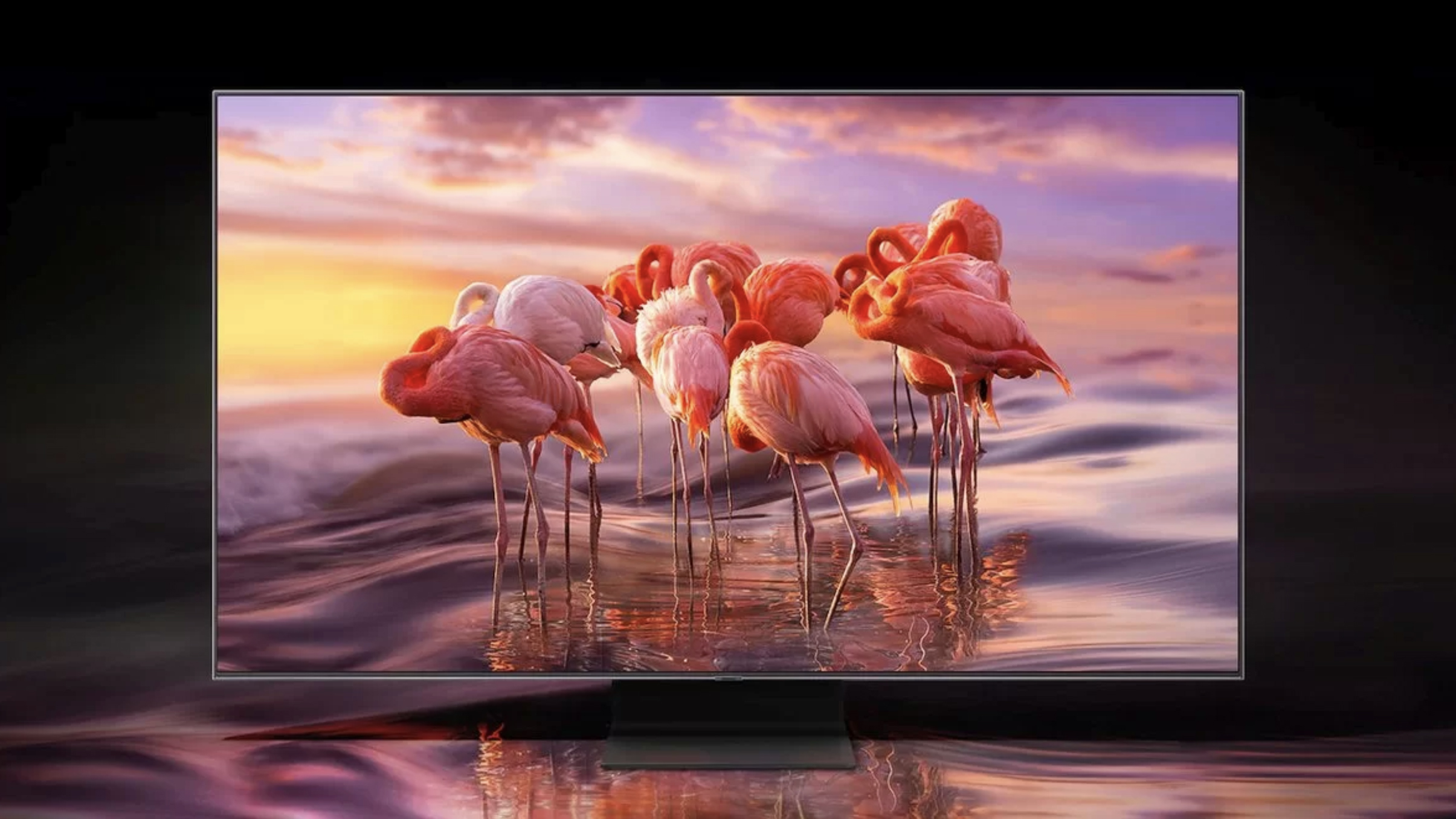
1. Samsung Q90 QLED TV (2019)
A stunning 4K QLED TV
Last year the Samsung Q9FN won plaudits galore for its features and image quality. But it's now been replaced on our list of the best 4K TVs by the Q90 QLED TV. The Q9FN wasn't perfect and there were legitimate complaints about viewing angles and an over-aggressive local dimming system that crushed detail just above black.
Samsung has clearly taken these criticisms to heart, and directly addressed them in the Q90. The new model has a visibly superior viewing angle that holds its own against an OLED TV, and the local dimming delivers deep blacks without losing shadow detail. To that end, the new Ultra Black Elite filter is nothing short of a revelation, rejecting ambient light in a way that just staggers belief.
It's not too much of a leap to say that the Samsung Q90 is the most impressive QLED we have reviewed to date, incorporating comprehensive features and cutting-edge picture innovations. As a result, this TV can deliver a performance that is capable of competing with and often surpassing even the best OLEDs. Certainly one of the best Samsung TVs you can buy.
Read the full review: Samsung Q90 QLED TV review


2. LG CX Series OLED TV
A mesmerizing OLED TV
48-inch: LG OLED48CX | 55-inch: LG OLED55CX | 65-inch: LG OLED65CX | 77-inch: LG OLED77CX
The LG CX OLED is certainly the best OLED TV for 2020, and fully deserves to scrape the top of this list to the best TVs available today.
Iterating on last year's LG C9 Series, the LG CX might not seem all that different – and it isn't. But by continuing the same mesmerizing picture quality and standout webOS smart platform, with a few modern-day updates like HDMI 2.1 and an a9 Gen 3 processor, it's managed to outdo its predecessor.
With a new 48-inch OLED TV size now available too, the CX is an even more flexible proposition for a wider variety of wallets and homes. With a slimline design and support for Dolby Vision and Atmos – along with bellowing built-in audio – it's a fantastic choice at any size.
LG is really looking to entice gamers with its 2020 range, too, with rock-bottom input lag, support for Nvidia G-Sync, and compatibility with 4K/120HZ gameplay for next-gen consoles.
You won't get HDR10+ here, sadly, and UK viewers will have to go without all of their fave catch-up apps, but make no mistake – this is the best OLED TV for you in 2020.
Read the full review: LG CX OLED
Replacing the LG C8 model from last year, and vying for the top spot against the Q90 above, the LG C9 OLED is a stunning evolution of the TV-maker's OLED technology.
Combining a stunning display with an immense amount of features and formats – with LG's brilliant webOS smart platform – this is undoubtedly one of the best 4K TVs ever made. There aren't huge differences with last year's model, but the addition of the 2nd Gen a9 processor means the picture processing is truly top-notch.
While it's not as bright as an LCD TV, those deep blacks make a huge difference to the dynamic range of the image. It’s also capable of vibrant and gorgeous colours, not to mention an astounding level of detail with native 4K content.
There are more expensive LG models in the range: notable the W9 and E9 OLEDs, though you're mainly paying for the fancier form factor and bigger audio output. For an OLED TV this year – or any TV, really – that performs for the price, you should really be considering the C9.
We'd recommend keeping an eye on this year's successor, the LG CX OLED, though you'll be paying a decent amount less for the older C9 model.
Read the full review: LG C9 OLED (OLED55C9, OLED65C9, OLED77C9)

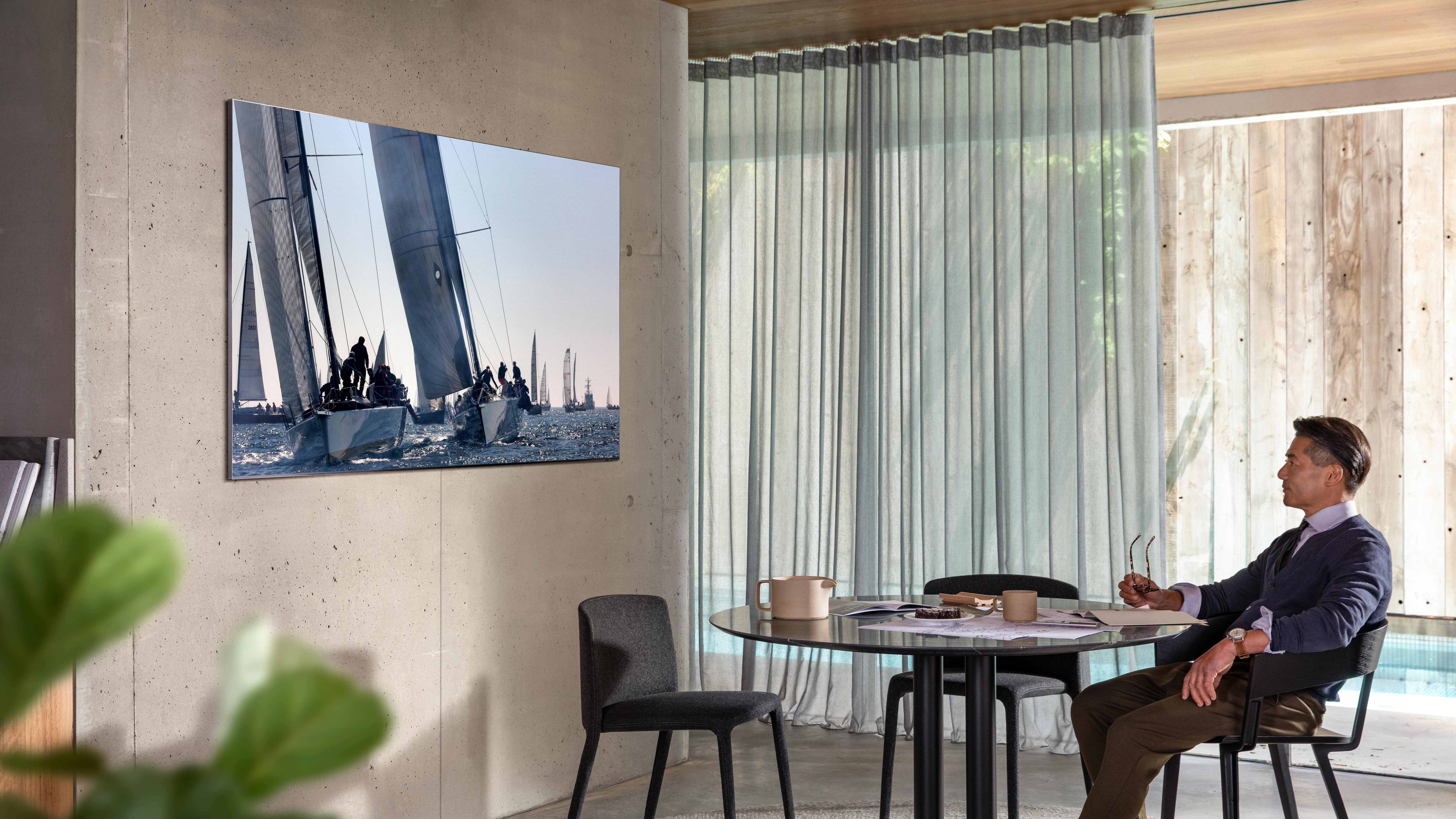
3. Samsung Q950TS 8K QLED
An 8K marvel for 2020
65-inch: QE65Q950TSTXXU | 75-inch: QE75Q950TSTXXU | 85-inch: QE85Q950TSTXXU
The first new 8K TV we've reviewed in 2020 is certainly setting the bar high. The Samsung Q950TS is the company's flagship 8K TV this year, and while shoppers will also be able to choose from two other lower-spec 8K QLEDs and a number of 4K QLEDs too, this is where Samsung is really trying to impress you.
The result? We're impressed. Samsung continues to lead the pack when it comes to upscaling to 8K from HD or 4K sources, shushing the naysayers who think 4K content looks best on 4K TVs.
Samsung has taken a long, hard look at its audio too – as it had to, given the middling audio performance of its 2019 sets. The Q950TS doesn't offer the game-changing audio we first hoped when we saw its OTS+ speaker array at CES 2020, but its sense of scale and height is still very much a suitably premium feature for a premium TV. The zero-bezel design doesn't hurt, either.
The Q950TS has launched in the US, with a 82-inch model retailing at $13,000 (around AU$21,400). You can pre-order the 65-inch, 75-inch, or 85-inch models in the UK for £5,999, £7,999 and £11,999 respectively – all of which are available from early May. Can't wait? You can check out the Samsung Q950R 8K QLED (from 2019) in the meantime.
Read more: Samsung Q950TS 8K QLED TV review

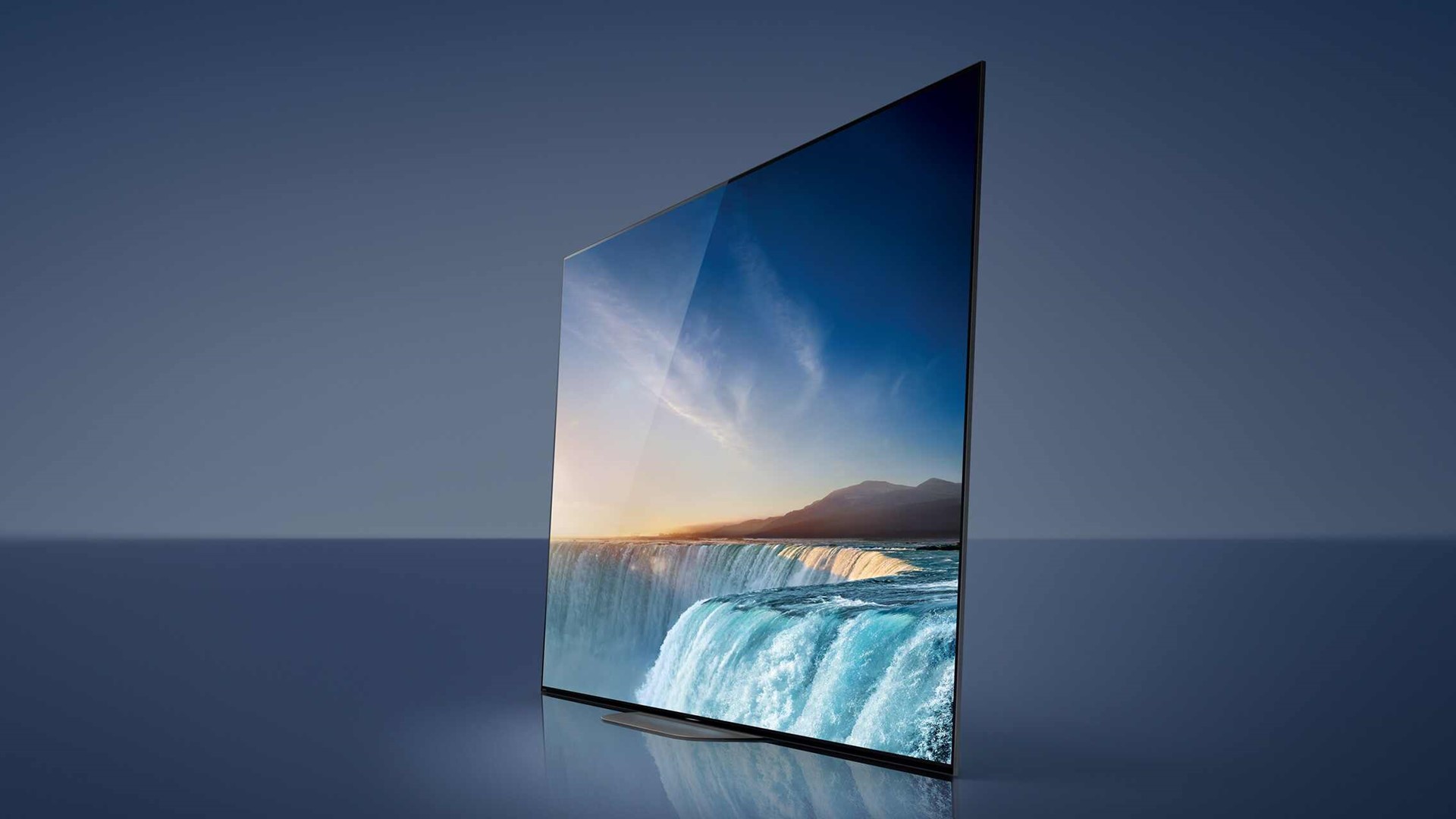
4. Sony Bravia A9G OLED (2019)
The A9G Master Series is an OLED to take on the best
65-inch: Sony Bravia 65A9G | 55-inch: Sony Bravia 55A9G
The update to last year’s A9F OLED does not disappoint, with best-in-class upscaling to ensure all those SD and HD images look startlingly detailed on the A9G’s 4K display, and the OLED panel to draw out incredible color and contrast performance.
Sony’s premium Acoustic Surface+ Audio technology also means you’re getting sound that vibrates out of the panel itself, for an immersive sound that isn’t limited to specific downward-firing drivers; there’s a two-channel audio system here, rather than the previous model’s 3.2 channel output.
There are some specific flaws worth noting, including the lack of Freeview Play, the on demand service for British broadcasters. While you get premium Dolby Vision and Dolby Atmos formats, there’s also no HDR10+, which may be an issue depending on which streaming services and HDR sources you use. The A9G is, however, IMAX Enhanced certified for those keen on the cinematic aspect ratio and DTS-mixed audio that affords.
Coming in 55-inch, 65-inch, and 77-inch sizes, there’s a lot of screen on show too – though you’re starting at £2,899 for the smallest size, with a considerable price tag for a television in your home. 2020 will see the A9G get a new 48-inch model size, too, which should bring a lower entry point to this premium set, though likely not that much cheaper than the 55-inch.
The somewhat cheaper Sony A8G OLED is also worth checking out, given it will save you around £1,000 – albeit with slightly lower specifications.
Read the full review: Sony A9G Master Series OLED


5. Panasonic GZ2000 4K OLED TV (2019)
A gorgeous OLED TV with a custom panel and blistering sound
55-inch: Panasonic TX-55GZ2000 | 65-inch: Panasonic TX-65GZ2000
The Panasonic GZ2000 is rightly at the top of the 2019 Panasonic TV range, with a custom panel elevating the picture above the (already impressive) GZ1500 and GZ1000 models.
Panasonic has set itself apart with dedicated HDR support, and the GZ2000 receives the same HDR10, HDR10+, Dolby Vision and HLG formats as found on the mid-range GX800 LED – meaning you're never left unable to play a certain title in its best possibly quality.
The manufacturers close links to Hollywood colorists show through too, with the GZ2000 being a mastering set of choice in production studios in North America – even if you can't buy Panasonic TVs in retail in the US.
What really sets the GZ2000 apart, though, is the sound system. With 140W speakers, split between hefty upward-firing drivers and a built-in soundbar, this is possibly the closest you'll get to cinema sound without investing in the right external AV kit – or just going to a cinema.
Certainly one of the best TVs of the year, even if you're paying a starting price of £3,299 for the 55-inch model
Read our full review: Panasonic GZ2000 TV review


6. LG E9 OLED TV (2019)
A stunning looking-glass OLED TV
55-inch: LG OLED55E9 | 65-inch: LG OLED65E9
The LG E9 OLED certainly has the design chops. Its slim glass display does without any fiddly legs or rim around the screen's edge, and the effect is startling. LG's new a9 Gen 2 processor is hard at work here too, ensuring crisp detail and smooth motion throughout – with the typically deep blacks and rich, vibrant colors expected of an OLED display.
We're still sad about the absence of the E7's integrated soundbar – both the E8 and E9 opted for a thinner speaker band instead – but the 4.2 channel audio and Dolby Atmos support still make for a dynamic soundscape far beyond your average television.
When all's said and done, it's hard to justify the E9 over the C9, given the similar picture processing and same outstanding smart TV platform, webOS – now with Alexa integration and an upgraded menu system for easier navigation. But if you want an OLED set with the looks to match, and a boost to audio, the E9 will be a stunning addition to your living room.
The LG E9 OLED isn't getting a direct successor for 2020, either, with the new GX OLED model taking its place. So if you're in the market for a sleek, glass-panel display like the E Series, you should get your hands on the E9 before the stock runs out completely.
Read the full review: LG OLED E9

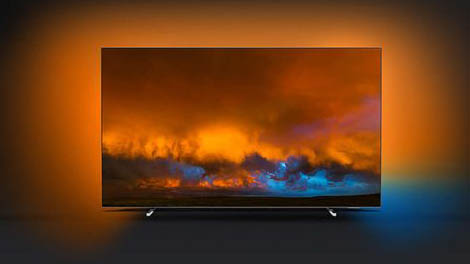
7. Philips OLED 804 (2019)
OLED plus Ambilight is a great combination
55-inch: Philips 55OLED804 | 65-inch: Philips 65OLED804
Why pick the Philips 804 OLED over another OLED TV, when there are so many these days to choose from? The answer is probably Ambilight, which projects gorgeous mood-lighting around the set, adding to the excellent pictures happening onscreen.
But the 804 OLED isn't just for show: thanks to Philips' beefy P5 Picture processor, its able to give real force to OLED images, with enhanced contrast and spectacular colors – even when upscaling from HD/SDR. Philips improves on last year's 803 model too with both Dolby Vision and HDR10+ support, meaning you won't have to choose between a dynamic HDR format.
The lack of Freeview Play may be frustrating for UK viewers, without catch-up provision for the likes of ITV and BBC, while the Android TV interface also isn't the smoothest experience on offer. But given what you do get, and the highly competitive price, makes this an OLED TV very much worth your while.
Read the full review: Philips OLED 804

Budget option
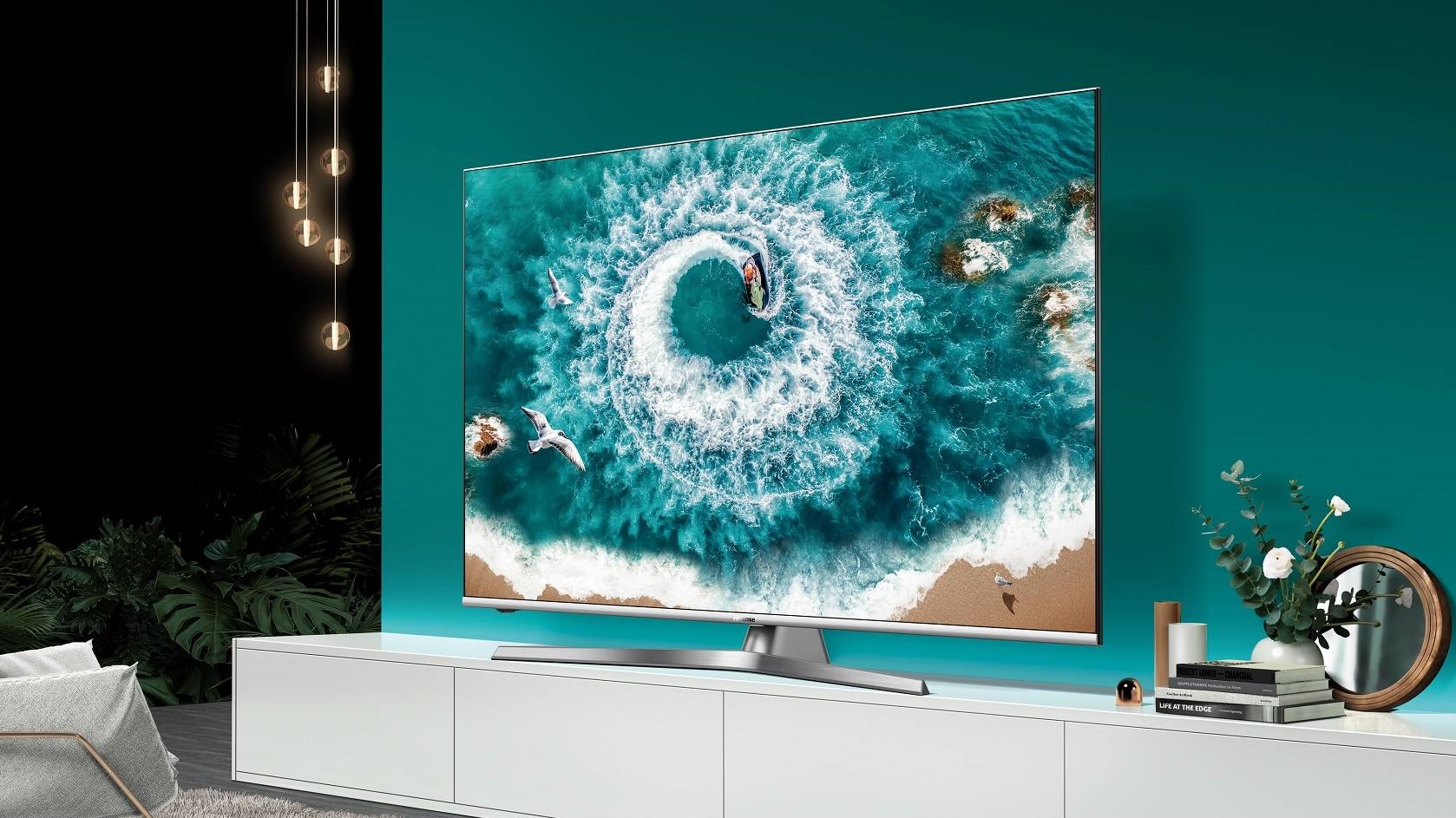
8. Hisense U8B ULED TV (2019)
High-value 4K on an expansive Hisense screen
55-inch: H55U8BUK | 65-inch: H65U8BUK
As ever, Hisense’s contribution is a good deal cheaper than others on this list, though the budget TV maker also offers a lot for the price.
The Hisense U8B ULED goes for bigscreen home entertainment, with 55- and 65-inch sizes that only go up to £999 for the larger model. The Vidaa U 3.0 smart platform is straightforward, connectivity with other devices doesn’t disappoint, and overall the picture performs well – even if poor local dimming leads to a lot of light blooming. The sound system packed into the U8B’s thin panel is also impressive.
The ‘ULED’ labelling isn’t too important, and refers to a set of internal criteria for Hisense’s more premium LED TVs – much like Samsung’s QLED displays. But you’re certainly getting a TV beyond the average LED, and with a more consistent performance than the Hisense O8B OLED TV. Given its price, the U8B just manages to nab a place on this list.
Those in the UK after something even cheaper, though, could do worse than the lower-spec Hisense Roku TV (also from 2019), which we gave a whopping 4.5 stars and starts at just £329.
Read the full review: Hisense U8B ULED
- Want better audio? Check out our guide to the best soundbars available.
- Once you've decided on a panel, make sure you read our guide on how to set up your TV to make sure you're getting the most out of it.
- Or find the best universal remote for your new home theater setup.
When to buy
Should you wait to buy a new TV? This is a question we're asked a lot. Like most technology, TVs are getting incrementally better all the time – which means, yes, if you wait a year there will probably be a bigger, flashier TV out there for less money.
You should make sure not to wait too long, though, as you might end up depriving yourself of today's advancements on the promise of tomorrow's. Smart TVs now come with operating systems built-in as standard with a number of streaming apps alongside regional broadcast television. Almost every new set – aside from small TVs – will be 4K resolution too, and come with some form of HDR capability, if not support for dynamic HDR formats like Dolby Vision and HDR10+.
The question of annual product ranges always rears its head, though. It can be tempting to splash out on a new 2020 TV, and you'll likely get something better for it. But last year's models still aren't far behind – usually at a far lower price, as retailers look to shift older stock – and any improvements for 2020 are likely to be incremental.
As ever, it's worth looking at the differences between a new model and the version it's replacing. The introduction of Samsung's Ultra Viewing Angle technology was a big boon for its high-end QLEDs in 2019, but other updates aren't nearly as notable.
If you do want to future-proof against the next wave of hardware specifications, though, the new HDMI 2.1 standard is going to prove crucial for serious gaming setups: allowing support for 8K resolution at 60 frames per second, 4K at 120fps, alongside a range of new gaming features that will be supported over HDMI. So keep an eye out for HDMI 2.1 if that's going to be important for you.
- TV stands: finding the best TV stand to suit your living room cinema needs
TV types
There are a lot of different screen types out there, too, all working in different ways to produce the same results. Each technology has its own unique strengths and weaknesses so here are some basics to consider:
LED TV: Direct LED
These displays are backlit by an array of LEDs (light emitting diodes) directly behind the screen. This enables localised dimming – meaning immediately adjacent areas of brightness and darkness can be displayed more effectively – and greatly improves contrast. LED TVs are also more power efficient and capable of a wider colour gamut than CCFL sets. Because of the extreme cost of mounting these arrays of LEDs, Direct LED TVs have largely been out muscled by Edge LED...
LED TV: Edge LED
With these TVs, LEDs of the backlight are mounted along the edges of the panel. This arrangement enables radically slender displays and offers superior contrast levels to CCFL, but can't achieve the same picture quality as directly lit LED sets. However, they do come in far cheaper which is why most LED TVs out there now use this technology.
OLED TV
The backlighting on OLED (organic light emitting diode) sets is achieved by passing an electric current through an emissive, electroluminescent film. This technique produces far better colours and higher contrast and also enables screens to be extremely thin and flexible.

Quantum Dot
As yet we're not quite at the stage where we're going to get self-emitting quantum dot LEDs, but they're a-coming. What we do have though is Samsung producing its Nanocrystal filter based on quantum dot technology to produce a seriously improved colour palette and contrast levels that get mighty close to the pinnacle of OLED.
Curved TV
Some manufacturers are now making TVs that have slightly curved screens. But unlike old CRT TVs, the curve is inwards rather than outwards. The idea is that this makes every pixel equidistant from your eyes, delivering a more satisfying picture. However, there are drawbacks for this type of screen - the main one being that if you sit far enough to one side – more than 40 degrees or so – the curve clearly starts to affect the image's geometry, foreshortening content near to you and compressing the image's centre.
HD vs 4K
HD
HD TVs come in two resolutions. Sets with the HD ready are required to be able to display a minimum 720p picture, and generally has a screen resolution of 1366 x 768 pixels. Meanwhile, Full HD TVs have a higher resolution of 1920 x 1080 pixels. It's highly advisable that you don't go for anything less than full HD in this day and age.
Ultra HD and 4K
The resolution of Ultra HD is exactly four times higher than full HD – 3840 x 2160. It means a far more detailed picture, with content requiring a lot more bandwidth and storage space. 4K TVs tend to be good at upscaling HD video to Ultra HD but there are currently very few options for watching native 4K content. Read more about 4K resolution.
8K
If 4K isn't enough to impress you, there are now a good number of 8K TVs entering the market. This ultra-ultra-high-definition format packs in four times the number of pixels as 4K, for even sharper, crisper images.
The difficulty is that there's little 8K content available – nothing on Netflix, for example! That means these sets need highly advanced processing to make upscale HD or 4K content for 8K screens, and while it isn't yet a must-buy technology, it's certainly where the TV market is going. Read more about 8K resolution.
HDR
Arguably the shift to HDR video could make a more dramatic difference to your viewing experience than moving from HD to 4K. Like still HDR images, the moving version expands the range of both the light and dark ends of spectrum, providing more detail for both. HDR needs new filming methods though – at the moment there is no way to backfill HDR into existing video. It also needs new TV tech too, with Samsung the only ones to create specific screens, though LG and Sony are going be able to update some of their existing stock to be compatible.
TV size
Buying a flatscreen television is a major investment and one that you can't afford to take lightly. Just popping into the closest store and grabbing the first plasma or LCD you see won't get you the best deal, the screen that suits your needs, or the gear you require to make the most of your new purchase.
People tend to pick the size of their flat TV based on the amount of space they have for it, this isn't necessarily wise. Flat TVs take up much less space than you might think, so your new TV may end up a foot or two further away from your viewing position, making the picture appear smaller.
Also, with hi-def, you can have a bigger screen and the same viewing distance without worrying about seeing blemishes inherent to the source. HDTV's lack of noise means that the ideal distance to sit from the screen is three to four times the height of the TV.
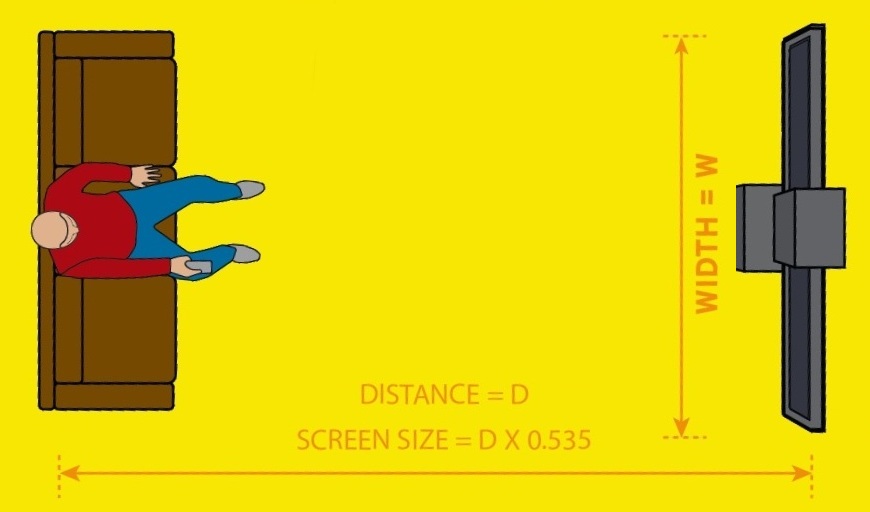
The trick here is to ensure that your TV is big enough to fill your line of vision, but small enough to be sharp and clear. Remember, if you intend to only watch standard-definition sources, the bigger the screen gets, the worse the image will look.
The ideal screen size can be calculated by multiplying the distance that you intend to sit away from it by 0.535 and then rounding this up to the nearest size.
So, if you sit 80in away from your TV, the ideal size is 42-inch (80 x 0.535= 42.8).
- What size TV should I buy?
- Check out the best cheap 4K TV deals going right now
from TechRadar - All the latest technology news https://ift.tt/2t6pKTm
via IFTTT
0 التعليقات: